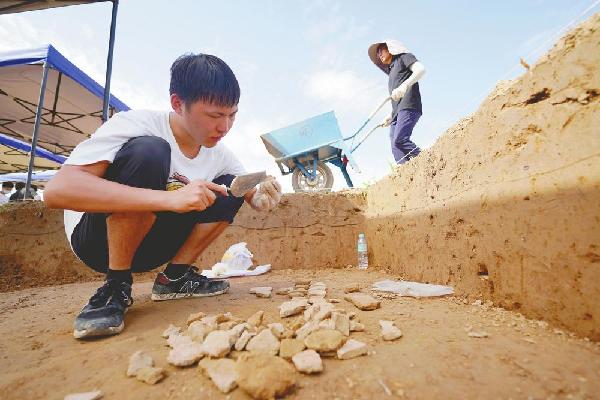

Archaeologists recently discovered over 240 relics including rammed earth, ash pits, house ruins, wells and tombs, in the ruins of an ancient city in North China's Hebei province. Most of these relics date back to the Han Dynasty (206 BC-AD 220).
Experts believe that this discovery, which also includes over 30,000 pieces of relic fragments, offers a new glimpse into the history of Bairen town. Located in Longyao county, Xingtai, it was an important city during the Warring States Period (475-221 BC).
The four-month excavation, which started in August, was carried out by staff from Renmin University of China, Hebei's provincial institute of cultural relics and archaeology, Xingtai's cultural relics protection and research center, and the Longyao cultural relics protection and management institute.
Archaeologists previously also conducted two excavations of these ruins in 2016 and 2018.
"The age of the cultural layers unearthed this time ranges from the Western Han Dynasty (206 BC-AD 24) to the Eastern Han Dynasty (25-220). In addition, a few relics from the Warring States Period and the Tang Dynasty (618-907) were also discovered, offering resources for a deeper and more thorough understanding of the development of the Bairen Town ruins," says Lyu Xueming, a professor with Renmin University of China, who was in charge of the excavation.
Among the most important discoveries were a large site of rammed earth, pottery slices inscribed with Chinese characters, and some ancient currencies.
The excavation is of great significance to the study of the settlement changes, living conditions, human activities and historical events in the southern part of the Hebei plain from the time before Qin Dynasty (221-206 BC) to the Han Dynasty, Lyu adds.